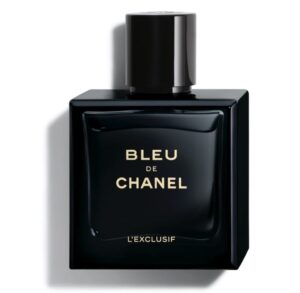A Rebirth on Via Montenapoleone
Milan’s via Montenapoleone has always been more than a shopping street—it is an open-air museum of luxury, a stage where the world’s most storied maisons articulate their visions of elegance. Against this backdrop, Saint Laurent has reopened its flagship, an architectural and cultural statement that deliberately balances two epochs. The store is not merely a retail site but a manifesto: Anthony Vaccarello’s interpretation of the maison’s future collides—delicately, reverently—with Italy’s historical codes of craftsmanship, stone, and proportion. The result is an immersive space where heritage whispers through marble veins and modernity gleams in chrome surfaces, each reflecting and refracting the other.
The Context of Milan and Saint Laurent
Saint Laurent’s decision to reinvest in Milan’s golden quadrilateral must be read within the larger choreography of European fashion capitals. Milan, despite its perpetual comparison to Paris, maintains its authority as a locus of luxury consumption, production, and design. For decades, via Montenapoleone has carried a gravitational pull: it draws haute couture ateliers, financiers, tastemakers, and tourists alike. To return here is to affirm a seat at the table of timeless style.
For Saint Laurent, whose DNA has always oscillated between Parisian provocation and international sophistication, this flagship is more than a retail environment. It is a positioning tool, declaring the brand’s serious engagement with the Italian milieu—not only as a market but as a cultural partner. This synergy between French daring and Italian craft recalls Yves Saint Laurent himself, who drew inspiration from Mediterranean landscapes, Roman antiquity, and Italian tailoring traditions.
Vaccarello’s Spatial Vision
Anthony Vaccarello, Saint Laurent’s creative director since 2016, is often celebrated for sharpening the maison’s codes: a silhouette defined by razor-sharp shoulders, monochrome palettes, and a sensual austerity. His work with the brand’s spaces, however, has become equally crucial in shaping Saint Laurent’s identity.
The Milan flagship extends the architectural philosophy he began in Paris and Los Angeles—spaces as stripped-back temples of light, stone, and reflection. Yet Vaccarello resists the sterility that modernism can produce. Instead, he curates a dialogue: sleek chrome rails sit against stone floors sourced from Italian quarries; angular staircases are softened by the glow of diffused light. Each detail insists that fashion retail is not about accumulation but about curation, reduction, and reverence.
This approach reflects Vaccarello’s broader aesthetic commitment: modernity does not erase the past, it reshapes it. Just as his collections often take Saint Laurent’s archival codes—le smoking, safari jackets, sheer blouses—and pare them down to brutalist essentials, the Milan flagship performs the same alchemy in stone and glass.
Materials as Narrative
The story of this reopening is written not only in design rhetoric but in the materials themselves. Italian marble dominates the interior: veined slabs line the walls, floors, and counters, their natural irregularity reminding the visitor of centuries of artisanal tradition. Each slab is cut with a precision that makes the space read less as boutique and more as gallery.
Mirrors play a critical role. Vaccarello deploys reflective surfaces not merely for vanity but to fracture and multiply the space, creating an endless mise-en-abyme. This is fashion as infinite regression, an acknowledgment of how style is always performed before an imagined audience. Chrome fixtures, meanwhile, carry the severity of modernist sculpture, anchoring the fluid interplay of reflection and stone.
Italian craftsmanship resonates throughout, from the joinery of wooden cabinets to the brass inlays that recall Milanese rationalist interiors of the 1930s. To walk through the flagship is to sense both the permanence of classical architecture and the ephemerality of fashion trends, coexisting in one continuous gesture.
A Conversation Between Eras
The guiding metaphor of this flagship is dialogue. On one side, the narrative of modernity: Vaccarello’s spare geometry, his devotion to black and white, his refusal of ornament. On the other side, the resonance of Italian history: marble echoing Renaissance basilicas, proportions echoing rationalist palazzi, the sense of Milan as a city where design is as sacred as religion.
This conversation between eras is not staged as conflict but as duet. The modern insists upon the historical to legitimize itself, while the historical gains renewed vitality through modern framing. The Milan flagship becomes a space where fashion customers encounter more than clothes—they encounter philosophy.
Fashion Retail as Experience
In the contemporary landscape, luxury retail must move beyond transactional encounters. The Milan flagship is not a store in the conventional sense; it is a museum of brand identity. Visitors do not merely browse jackets or handbags, they are enveloped by an atmosphere that suggests permanence, prestige, and belonging.
Vaccarello’s decision to focus on spatial purity reflects an acute awareness of luxury’s new economy: one rooted in experience, in aura, in the semiotics of environment. A handbag, priced in the thousands, cannot be justified solely by materials or labor. It requires a surrounding mythology, an architectural mise-en-scène that sanctifies it. In this way, the Milan flagship functions as both theatre and chapel, staging the ritual of consumption with solemn grandeur.
Historical Continuities with Yves Saint Laurent
Though this space feels contemporary, it is important to trace its continuity with Yves Saint Laurent’s own architectural sensibility. The founder of the maison understood that environments mattered: he worked with set designers, cultivated interiors that mirrored his collections, and sought inspiration in decorative arts.
Vaccarello’s Milan flagship extends this heritage. By staging fashion within an architectural environment of such deliberate restraint, he recalls Saint Laurent’s belief that simplicity—when rigorously executed—could be the most radical gesture. Just as Yves challenged the codes of femininity with a tuxedo suit, Vaccarello challenges the codes of retail with a temple-like purity.
Italian Craftsmanship and French Vision
The flagship also dramatizes a broader cultural interplay: French vision tempered by Italian execution. The French tradition in fashion has often been conceptual, intellectual, driven by philosophy and provocation. Italian tradition, by contrast, is anchored in material excellence, artisanal mastery, and the sensuous appeal of surfaces.
By combining the two, Saint Laurent creates a synthesis that transcends national identity. The Milan flagship becomes not merely a French brand’s outpost but a Franco-Italian collaboration, a hybrid cultural object that celebrates both traditions.
The Flagship as Cultural Landmark
One cannot underestimate the symbolic capital of reopening on via Montenapoleone. This street is lined with names like Gucci, Prada, Hermès, and Cartier. To situate Saint Laurent here is to enter into dialogue with peers, rivals, and predecessors. It is a reaffirmation that the maison belongs among the pantheon of enduring luxury.
Yet the flagship distinguishes itself precisely through its restraint. Where some neighboring boutiques dazzle with ornate displays, Saint Laurent whispers with quiet authority. Its power lies in silence, in minimalism, in the confidence that less can indeed be more.
Consumer Rituals and Urban Choreography
The reopening also reshapes the choreography of Milanese shopping rituals. Via Montenapoleone is not a street to be rushed; it is a promenade, a catwalk for those who themselves become spectators and spectacles. Entering the Saint Laurent flagship becomes part of this choreography: an interlude of reflection, an immersion in marble and glass, a pause in which consumption is aestheticized.
The boutique is thus not isolated from the city but integrated into its cultural performance. It reinforces Milan’s reputation as a city where fashion is not simply bought but lived, where architecture and apparel form a continuous fabric of meaning.
Beyond Commerce: The Store as Archive
Vaccarello’s flagship also functions as an archive in motion. Every rail, every display case, every mirrored surface frames the current season’s collection as part of a longer narrative. By situating contemporary pieces in an environment that feels timeless, the boutique ensures that Saint Laurent garments are not read as fleeting trends but as chapters in a canon.
In this sense, the Milan flagship blurs the boundary between commerce and curation. It is simultaneously shop, gallery, and archive—each garment a cultural artifact, each customer an unwitting participant in the preservation of heritage.
Symbolism in an Age of Digital Retail
The reopening also raises questions about relevance in an age of e-commerce. Why invest in monumental flagships when digital platforms dominate sales? The answer lies in symbolism. A physical flagship embodies permanence in ways a website cannot. It provides tactile reassurance of quality, spatial immersion in brand values, and a theatrical stage for fashion’s rituals.
For Saint Laurent, the Milan flagship signals commitment not only to commerce but to cultural continuity. It anchors the maison within the geography of global luxury at a time when digital spaces threaten to flatten distinctions.
Critical Reception and Cultural Resonance
Early impressions suggest the Milan flagship is being celebrated not merely as a store but as an artwork. Critics note its dialogue with Milanese rationalism, its disciplined minimalism, and its ability to make retail feel like ritual. Customers describe it as serene, almost spiritual, a place where one does not shop but contemplates.
This reception underscores a key point: fashion architecture today must aim for cultural resonance beyond immediate sales metrics. The true measure of success is whether a store can enter the city’s collective memory, becoming a landmark in its own right.
Impression
Saint Laurent’s reopening on via Montenapoleone achieves precisely that. It is a temple to modern luxury, a gallery of materials, a dialogue between eras. Anthony Vaccarello has crafted not merely a retail space but a philosophy rendered in stone, mirror, and light.
In doing so, he reaffirms Saint Laurent’s place in Milan and in the broader narrative of global fashion. The flagship is a reminder that luxury is not only about what one wears but where one encounters it—how spaces can elevate objects into icons, how architecture can anchor memory, and how history can be rewritten through design.
In Milan, Saint Laurent now speaks fluently across centuries: the marble of Renaissance palazzi, the steel of modernist sculpture, the daring of Parisian couture. This is not a return but a rebirth, not a shop but a statement, not an ending but the beginning of another chapter in the maison’s ongoing conversation with time.
No comments yet.











